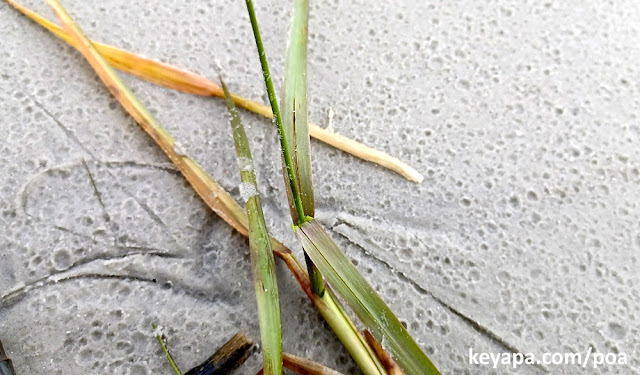I was strolling along Coligny Beach in Hilton Head Island, SC when I came upon washed up organic debris that looked like grasses. Up to that point, the most interesting thing I had seen were the empty carapaces of horseshoe crabs.
Much to the annoyance of the wife I took some time examining what I found.
I've always been interested in drift seeds and drift fruits, which are carried by ocean currents far from their points of origin and deposited by the tides on beaches, where they may have a chance to root and flourish. If you walk beaches often, you'll notice that a line of organic and other "debris" line the sand during the day, and an entire culture of so-called "beaners" comb these sea "wrack" for seabeans and other hidden treasures.
I don't believe grasses are common in such sea wracks, although there have been cases of masses of dead and dying Phragmites australis washing up to litter beaches in the northeast. The putative grasses that I found were composed of broken and intact culms, with attached fibrous roots and even rhizomes. I at first thought they were palm fragments, but the culms actually look similar to those of Saccharum officinarum (sugarcane) or some small bamboo.
There are of course various dune grasses at the beach, especially Uniola paniculata, which lined the dunes that fronted the whitish sand. But the many fragments I found at the wrack were not this species, nor one of the other dune grasses that I have found.
I'd love to figure out the identity of the plant, and determine whether they actually will be able to somehow root in the beach, unlikely as that possibility may be. The notion of live grass fragments being carried long distances along the ocean currents to distant shores, on which they can start up a new and thriving population, is really quite fascinating.



No comments:
Post a Comment